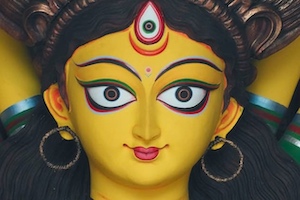Child marriage model gets national recognition
The Statesman | 17 July 2025As part of its campaign against child marriage, the Bengal government has forwarded the so-called ‘Durgapur Model’ to New Delhi for consideration as a nationwide strategy.
The model is the brainchild of Reeta Pathik Ghosh, school inspector of the Durgapur Circle. Ghosh’s approach frames education as both a shield and a path to empowerment, encouraging girls to become vigilant and proactive against the threat of child marriage.
Local activist Shilpi Pal from Birbhanpur village has waged a 14-year campaign of her own. She claims to have successfully intervened in 50 child marriage cases, including her most recent rescue in Kaligunj, near Durgapur, just last month.
The ‘Durgapur Model’ aims to serve as a replicable template for vulnerable communities across India. It focuses on strengthening girls’ education while building support systems within schools. Ghosh has piloted several initiatives in three local schools—Rayranidevi Girls School, Nepalipara Hindi High School, and Gopalmath High School. These include ‘Moner Katha Box’ (Speak Your Heart) for anonymous feedback, skill-building and vocational clubs, evening tuition support, self-defence training, and regular counselling sessions.
“This model has already made an impact,” said Ghosh. “In just one year, it helped prevent the marriage of 14 girls from the three pilot schools.”
The Bengal government has submitted the model to the National Institute of Educational Planning and Administration (NIEPA) in Delhi. It aligns with the state’s broader mission, spearheaded by chief minister Mamata Banerjee, to end child marriage and support girls’ education.
During the Covid-19 pandemic, child marriage incidents rose sharply. Some communities developed covert methods to carry out underage marriages in remote areas to evade authorities. “Once a marriage is solemnised, it’s extremely difficult to undo it. What’s worse, some families exploit schemes like Kanyashree and Rupashree fraudulently,” said Professor Buswajit Ghosh of Burdwan University, who researches gender empowerment through Kanyashree.
Still, local efforts have seen some success. In West Burdwan alone, 78 child marriages were reportedly prevented in the past year. Sanjoy Pal, additional district magistrate (education), said: “We’ve strengthened coordination among Kanyashree Clubs, the police’s Swayamsiddha programme, and ICDS (Integrated Child Development Scheme) workers.”
For decades, child marriage was viewed as normal across many rural communities in Bengal, especially among marginalised groups. The National Family Health Survey-5 found that 41.6 per cent of women aged 20–24 in West Bengal were married before the age of 18—well above the national average of 23.3 per cent.
India passed the Prohibition of Child Marriage Act in 2006, but enforcement remains patchy.
